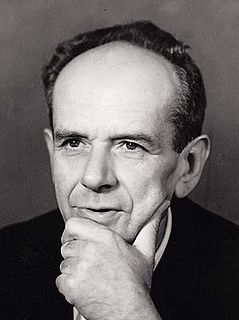Related Research Articles

Psychometrics is a field of study within psychology concerned with the theory and technique of measurement. Psychometrics generally refers to specialized fields within psychology and education devoted to testing, measurement, assessment, and related activities. Psychometrics is concerned with the objective measurement of latent constructs that cannot be directly observed. Examples of latent constructs include intelligence, introversion, mental disorders, and educational achievement. The levels of individuals on nonobservable latent variables are inferred through mathematical modeling based on what is observed from individuals' responses to items on tests and scales.
Dissociative identity disorder (DID), previously known as multiple personality disorder (MPD) and colloquially known as split personality disorder, is a mental disorder characterized by the maintenance of at least two distinct and relatively enduring personality states. The disorder is accompanied by memory gaps beyond what would be explained by ordinary memory issues. The personality states alternately show in a person's behavior; however, presentations of the disorder vary. Other conditions that often occur in people with DID include post-traumatic stress disorder, personality disorders, depression, substance use disorders, conversion disorder, somatic symptom disorder, eating disorders, obsessive–compulsive disorder, and sleep disorders. Self-harm, non-epileptic seizures, flashbacks with amnesia for content of flashbacks, anxiety disorders, and suicidality are also common.
Neurosis is a class of functional mental disorders involving chronic distress, but neither delusions nor hallucinations. The term is no longer used by the professional psychiatric community in the United States, having been eliminated from the Diagnostic and Statistical Manual of Mental Disorders (DSM) in 1980 with the publication of DSM III. However, it is still used in the ICD-10 Chapter V F40–48.

Antoni Ignacy Tadeusz Kępiński was a Polish psychiatrist and philosopher. He is known as the originator of concepts of information metabolism (IM) and axiological psychiatry.

Borderline personality disorder (BPD), also known as emotionally unstable personality disorder (EUPD), is a personality disorder characterized by a long-term pattern of unstable interpersonal relationships, distorted sense of self, and strong emotional reactions. Those affected often engage in self-harm and other dangerous behaviors, often due to their difficulty with returning their emotional level to a healthy or normal baseline. They may also struggle with a feeling of emptiness, fear of abandonment, and detachment from reality. Symptoms of BPD may be triggered by events considered normal to others. BPD typically begins by early adulthood and occurs across a variety of situations. Substance use disorders, depression, and eating disorders are commonly associated with BPD. Some 8 to 10% of people affected by the disorder may die by suicide. The disorder is often stigmatized in both the media and the psychiatric field and as a result is often underdiagnosed.

Personality is the characteristic sets of behaviors, cognitions, and emotional patterns that are formed from biological and environmental factors, and which change over time. While there is no generally agreed upon definition of personality, most theories focus on motivation and psychological interactions with the environment one is surrounded by. Trait-based personality theories, such as those defined by Raymond Cattell, define personality as traits that predict an individual's behavior. On the other hand, more behaviorally-based approaches define personality through learning and habits. Nevertheless, most theories view personality as relatively stable.

In psychology, trait theory is an approach to the study of human personality. Trait theorists are primarily interested in the measurement of traits, which can be defined as habitual patterns of behaviour, thought, and emotion. According to this perspective, traits are aspects of personality that are relatively stable over time, differ across individuals, are relatively consistent over situations, and influence behaviour. Traits are in contrast to states, which are more transitory dispositions.

Conversion disorder (CD), or functional neurologic symptom disorder, is a diagnostic category used in some psychiatric classification systems. It is sometimes applied to patients who present with neurological symptoms, such as numbness, blindness, paralysis, or fits, which are not consistent with a well-established organic cause, which cause significant distress, and can be traced back to a psychological trigger. It is thought that these symptoms arise in response to stressful situations affecting a patient's mental health or an ongoing mental health condition such as depression. Conversion disorder was retained in DSM-5, but given the subtitle functional neurological symptom disorder. The new criteria cover the same range of symptoms, but remove the requirements for a psychological stressor to be present and for feigning to be disproved. ICD-10 classifies conversion disorder as a dissociative disorder while DSM-IV classifies it as a somatoform disorder.

Otto Friedmann Kernberg is a psychoanalyst and professor of psychiatry at Weill Cornell Medical College. He is most widely known for his psychoanalytic theories on borderline personality organization and narcissistic pathology. In addition, his work has been central in integrating postwar ego psychology with Kleinian and other object relations perspectives. His integrative writings were central to the development of modern object relations, a theory of mind that is perhaps the theory most widely accepted among modern psychoanalysts.
Atypical depression is defined in the DSM IV as depression that shares many of the typical symptoms of major depressive disorder or dysthymia but is characterized by improved mood in response to positive events. In contrast to those with atypical depression, people with melancholic depression generally do not experience an improved mood in response to normally pleasurable events. Atypical depression also often features significant weight gain or an increased appetite, hypersomnia, a heavy sensation in the limbs, and interpersonal rejection sensitivity that results in significant social or occupational impairment.
Dr. Robert Glick is a professor of psychiatry at Columbia University College of Physicians and Surgeons, and a Supervising and Training Psychoanalyst at the Columbia University Center for Psychoanalytic Training and Research; he was formerly a director of the Center.
Intensive short-term dynamic psychotherapy (ISTDP) is a form of short-term psychotherapy developed through empirical, video-recorded research by Habib Davanloo.
The Barratt Impulsiveness Scale (BIS) is a widely used measure of impulsiveness. It includes 30 items that are scored to yield six first-order factors and three second-order factors.
In the study of psychology, neuroticism has been considered a fundamental personality trait. For example, in the Big Five approach to personality trait theory, individuals with high scores for neuroticism are more likely than average to be moody and to experience such feelings as anxiety, worry, fear, anger, frustration, envy, jealousy, guilt, depressed mood, and loneliness. Such people are thought to respond worse to stressors and are more likely to interpret ordinary situations, such as minor frustrations, as appearing hopelessly difficult. They are described as often being self-conscious and shy, and tending to have trouble controlling urges and delaying gratification.
Compulsive buying disorder (CBD), or oniomania, is characterized by an obsession with shopping and buying behavior that causes adverse consequences. According to Kellett and Bolton, compulsive buying "is experienced as an irresistible–uncontrollable urge, resulting in excessive, expensive and time-consuming retail activity [that is] typically prompted by negative affectivity" and results in "gross social, personal and/or financial difficulties". Most people with CBD meet the criteria for a personality disorder. Compulsive shopping is classified by ICD-10 (F63.8) as an "impulse control disorder, not otherwise classified." Several authors consider compulsive shopping rather as a variety of dependence disorder.
The Temperament and Character Inventory (TCI) is an inventory for personality traits devised by Cloninger et al. It is closely related to and an outgrowth of the Tridimensional Personality Questionnaire (TPQ), and it has also been related to the dimensions of personality in Zuckerman's alternative five and Eysenck's models and those of the five factor model.
Symptom Checklists "O" and "S" are self-report questionnaires used for determining the presence of neurotic disorders, assessment of changes of symptom intensity, and evaluation of effectiveness of treatment in terms of symptom reduction or intensification.

The Hypomania Checklist (HCL-32) is a questionnaire developed by Dr. Jules Angst to identify hypomanic features in patients with major depressive disorder in order to help recognize bipolar II disorder and other bipolar spectrum disorders when people seek help in primary care and other general medical settings. It asks about 32 behaviors and mental states that are either aspects of hypomania or features associated with mood disorders. It uses short phrases and simple language, making it easy to read. The University of Zurich holds the copyright, and the HCL-32 is available for use at no charge. More recent work has focused on validating translations and testing whether shorter versions still perform well enough to be helpful clinically. Recent meta-analyses find that it is one of the most accurate assessments available for detecting hypomania, doing better than other options at recognizing bipolar II disorder.

Eric M. Plakun is an American psychiatrist, psychoanalyst, researcher and forensic psychiatrist. He is the current medical director/CEO at the Austen Riggs Center in Stockbridge, Massachusetts. Plakun's primary interests include the mental health advocacy, full implementation of the mental health parity law, access-to-care issues, and reducing health disparities; the value of and evidence base for psychosocial treatments and the diagnosis, treatment, longitudinal course and outcome of patients with borderline personality disorder and treatment resistant disorders. Plakun has been widely published and quoted in the media on psychotherapy and psychiatry, including in The New York Times and The Globe and Mail. He has appeared in the media to discuss his psychiatric work on WAMC, the Albany, New York, affiliate of NPR. and on CBS 60 Minutes. His psychiatric research has been widely cited.
Maladaptive daydreaming, also called excessive daydreaming, is when an individual experiences so much daydreaming that it interferes with daily life. It is a proposed diagnosis of a disordered form of dissociative absorption associated with excessive fantasy that is not recognized by any major medical or psychological criteria. Maladaptive daydreaming can result in distress, can replace human interaction and may interfere with normal functioning such as social life or work. Maladaptive daydreaming is not a widely recognized diagnosis, and is not found in any major diagnostic manual of psychiatry or medicine. The term was coined in 2002 by Professor Eli Somer of University of Haifa. Somer's definition of the proposed condition is “extensive fantasy activity that replaces human interaction and/or interferes with academic, interpersonal, or vocational functioning.” There has been limited research outside of Somer's.
References
- 1 2 3 4 5 Aleksandrowicz JW, Klasa K, Sobański JA. Stolarska D. Kwestionariusz osobowości nerwicowej KON-2006. Polskie Towarzystwo Psychiatryczne, Kraków, 2006. ISBN 83-86826-56-8
- 1 2 3 4 5 Aleksandrowicz JW, Klasa K, Sobański JA, Stolarska D. Kwestionariusz osobowości nerwicowej. KON-2006. Psychiatria Polska. 2007; 41(6): 759-78
- 1 2 3 4 5 Aleksandrowicz JW, Klasa K, Sobański JA, Stolarska D. KON-2006 Neurotic Personality Questionnaire. Archives of Psychiatry and Psychotherapy, 2009; 1 : 21–2
- ↑ Sobański JA, Cyranka K, Rodziński P, Klasa K, Rutkowski K et al. Czy cechy osobowości i nasilenie objawów nerwicowych wiążą się ze sprawozdawaniem myśli samobójczych u pacjentów dziennego oddziału leczenia zaburzeń nerwicowych? Psychiatr. Pol. 2014 epub ahead of print (31.12.2014) doi: 10.12740/psychiatriapolska.pl/online-first/5
- ↑ Białas A. Psychotherapy effectiveness and the possibility of personality traits changes depending on the patients’ age. Archives of Psychiatry and Psychotherapy, 2009; 1 : 11–19
- ↑ Białas A. Wiek pacjentów a skuteczność psychoterapii i możliwość zmiany cech osobowości. Psychoterapia, 2008; 144(1): 27–42
- ↑ Sobański JA, Klasa K, Cyranka K, Mielimąka M, Dembińska E i wsp. Skuteczność intensywnej psychoterapii w oddziale dziennym oceniana za pomocą Kwestionariusza Osobowości Nerwicowej KON-2006. Psychiatr. Pol, Psychiatria Polska 2014; epub ahead of print (31.12.2014) doi: 10.12740/psychiatriapolska.pl/online-first/6
- ↑ Ježková V, Matulová P. Pilot study of KON-2006 in the Czech Republic. Arch. Psychiatr. Psychother. 2010; 12(3): 57–61
- ↑ Styła R. Concept of reliable change in the usage of the KON-2006 Neurotic Personality Questionnaire. Arch. Psychiatry Psychother. 2011; 13(3): 21–24
- ↑ Styła R. Różnice w zakresie skuteczności intensywnych programów leczenia zaburzeń osobowości i nerwic. Czy warto monitorować efektywność zespołu terapeutycznego? Psychiatr. Pol. 2014; 48(1): 157–171
- ↑ Орлов, О; Лобанов, І (2016). "Психологічна діагностика невротизації особистості (український переклад та апробація опитувальника невротичних особистісних рис KON-2006)" (PDF). Вісник ХДУ Серія Психологічні науки. 1 (2). Retrieved July 7, 2016.